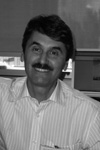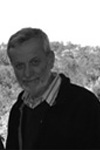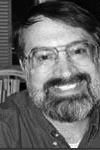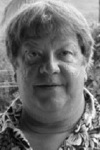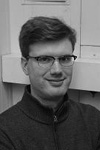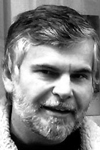principles of fluorescence techniques
april 7-9, 2010 | chicago, il, usa
Dr. Beniamino Barbieri | ISS, Inc. | President | 1602 Newton Dr. | Champaign, IL 61822 | USA | Tel: 217-359-8681 | beniamino.barbieri@iss.com
Prof. Enrico Gratton | University of California, Irvine | Department of Biomedical Engineering | Irvine, CA 92697-2715 | USA | Tel: 949-824-2674 | egratton22@yahoo.com
Enrico Gratton was born in Merate (Como) Italy. He received his doctorate degree in physics from the University of Rome in 1969. From 1969 to 1971 he was a post-doctoral fellow at the Istituto Superiore di Sanità in Italy. He went to the University of Illinois at Urbana-Champaign (UIUC) in 1976 and began his work as a research associate in the Department of Biochemistry. In 1978 he was appointed assistant professor in the Department of Physics at UIUC. In 1989 he was promoted to professor. Dr. Gratton's laboratory has reached international recognition for the development of instrumentation for time-resolved fluorescence spectroscopy using frequency domain methods.
In 1986 Dr. Gratton was awarded a grant from the National Institutes of Health, National Center for Research Resources, to establish the first national facility dedicated to fluorescence spectroscopy: the Laboratory for Fluorescence Dynamics (LFD). In 2006 the entire LFD laboratory moved to its current location at the new Natural Sciences II building at the University of California, Irvine. Dr. Gratton remains Principal Investigator of the LFD and holds joint appointments as Professor in the UCI departments of Biomedical Engineering and Physics and in the College of Medicine. The facility is a state-of-the-art fluorescence laboratory for use by local, national, and international scientists. It has a dual and equal commitment to research and development of fluorescence instrumentation and theory and to service in a user-oriented facility. Dr. Gratton's research interests are varied and many; they include design of new fluorescence instruments, protein dynamics, hydration of proteins, and I.R. spectroscopy of biological substances. Dr. Gratton has authored or co-authored over 400 publications in refereed scientific journals.
Prof. Zygmunt Gryczynski | University of North Texas | Dept. of Molecular Biology and Immunology | 3500 Camp Bowie Blvd. | Fort Worth, TX 76107 | USA | Tel: 808-956-5034 | zgryczyn@hsc.unt.edu
Dr. Zygmunt Gryczynski received an M.S. in experimental physics in 1982 from the University of Gdansk and a Ph.D. in spectroscopy in 1987 working on the basic spectroscopic studies of isotropic and oriented systems of organic molecules. In 1991 he become a Research Assistant Professor in the Department of Biochemistry and Molecular Biology at the University of Maryland, and from 1998-2005 he was an Assistant Director in the Center for Fluorescence Spectroscopy at the University of Maryland. Since 2005 he is a Professor of Molecular Biology and Immunology at the University of North Texas Health Science Center at Fort Worth, Texas. In 2006, with the support from Emerging Technology Funds (ETF) of Texas and his colleagues, he established a Center for Commercialization of Fluorescence Technologies (CCFT).
His early work at the University of Maryland was focused on ultrafast time-resolved fluorescence spectroscopy, intrinsic fluorescence of hemoproteins as well as the thermodynamics of ligand binding and the allosteric mechanism of O2 binding in hemoproteins. He has pioneered the use of multi-photon excitation and light quenching in time-resolved fluorescence spectroscopy. His focus has been on applications of fluorescence spectroscopy to study biological systems using time-resolved fluorescence, anisotropy, and FRET. He also pioneered novel fluorescence sensing methods for biomedical applications in tissue and blood. His interest includes modern optical imaging methods with a focus on fluorescence microscopy. For the last six years his interests expanded to nanotechnology and applications of novel plasmonic effects induced by light in metallic nanostructures to fluorescence spectroscopy. He pioneered metal enhanced fluorescence and surface plasmons coupled emission (SPCE) phenomena for biomedical and diagnostics applications. His current focus is to explore quantum-level interactions to study the dynamics of biophysical and biochemical processes at the molecular level. He is an author of over 150 peer-review publications and eight book chapters.
Prof. Philip Hockberger | Northwestern University | Department of Physiology M211 | 303 E. Chicago Ave. | Chicago, IL 60611 | USA | Tel: (312) 503-5625 | p-hockberger@northwestern.edu
I have a long-standing interest in developing and utilizing methods for imaging structural and biochemical changes in living cells, especially changes in intracellular free calcium ions. One of the inherent limitations of all optical methods is the deleterious effect of light on cells caused by the interactions of photons with endogenously- and exogenously-applied chromophores. In recent years I have been investigating the causes and remedies of this phototoxicity. My collaborators and I have discovered that one important source of phototoxicity is light-induced generation of hydrogen peroxide in cells caused by activation of flavin-containing oxidases. This source of toxicity is substantially reduced in cells imaged using multiphoton microscopy. We are currently using this microscopic technique to further explore the causes of phototoxicity with an eye toward developing better, less toxic methods for imaging living cells.
Prof. David M. Jameson | University of Hawaii at Manoa | Department of Cell and Molecular Biology | John A. Burns School of Medicine | Honolulu, HI 96822 | USA | Tel: 808-956-5034 | Website | djameson@hawaii.edu
A student of the late Prof. Gregorio Weber, David Jameson is Full Professor in the Department of Cell and Molecular Biology at the University of Hawaii. Prof. Jameson's research interests are focused on the development and application of time-resolved and steady-state fluorescence methodologies to elucidate dynamic aspects of biomolecules, including proteins, nucleic acids and membrane systems.
Currently, his laboratory is investigating several protein systems, including dynamin, a large (98kDa) GTPase which functions to "pinch-off" membrane vesicles in pathways such as receptor mediated endocytosis and synaptic vesicle recycling. This research involves both in vitro and in vivo studies on the self-association modes of dynamin as well as its interaction with membranes and other proteins such as endophilin and Arc. His lab also has a project on Botulinum Neurotoxin funded by Allergan, Inc. This project involves biophysical studies on proteins forming the neurotoxin complex as well as development of in vitro and in vivo toxin assays based on fluorescence fluctuation spectroscopy.
Author of more than 130 peer-reviewed articles, Prof. Jameson regularly reviews grants for the American Heart Association, the National Institutes of Health and the National Science Foundation. His research has been supported by grants from the National Institutes of Health, the National Science Foundation and the American Heart Association.
Dr. Justin Jureller | University of Chicago | Chicago, IL | USA | Tel: 773-834-3864 | jureller@uchicago.edu
Prof. Peter So | Massachusettes Institute of Technology (MIT) | Dept. of Mechanical and Biological Engineering | Cambridge, MA 02139 | USA | Tel: 617-253-6552 | ptso@mit.edu
Peter So is a professor of the Department of Mechanical Engineering and the Division of Biological Engineering in the Massachusetts Institute of Technology. Prior to joining MIT, Peter So obtained his Ph.D. from Princeton University in 1992 and subsequently worked as a postdoctoral associate in the Laboratory for Fluorescence Dynamics in the University of Illinois in Urbana-Champaign. His research focuses on developing high resolution and high information content microscopic imaging instruments. These instruments are applied in biomedical studies such as the non-invasive optical biopsy of cancer, the mechanotransduction processes in cardiovascular diseases, and the effects of neuronal remodeling on memory plasticity.
Dr. Ewald Terpetschnig | ISS, Inc. | 1602 Newton Drive | Champaign, IL 61822 | USA | Tel: 217-359-8681 | ewald.terpetschnig@iss.com
Ewald Terpetschnig received his Ph.D. from the Karl-Franzens University in Graz, Austria in Organic Chemistry. He has a 20-year track record working in the field of fluorescence with his main interest in fluorescence probes and labels for biomedical applications. Dr. Terpetschnig's industrial career includes: research project and staff management positions as Senior Director of R&D Chemistry (Luminex Corp., Austin, TX), Team Leader for Assay and Product Research (LJL Biosystems/Molecular Devices , Sunnyvale, CA), and as Postdoctoral Chemist (Molecular Probes, Inc., Eugene, OR). His career also includes academic positions in various chemistry departments as Lecturer, Research Scientist (at the University of Maryland at Baltimore, Center for Fluorescence Spectroscopy) and Assistant Professor (at the University of Regensburg at Bavaria,Germany in the Institute of Analytical Chemistry, Chemo- and Biosensors). He has over 40 publications in international journals and twenty patents/patent applications (US and international) related to fluorescence technologies. Currently, Dr. Terpetschnig is the Product Manager for the Analytical Instruments product line at ISS.

